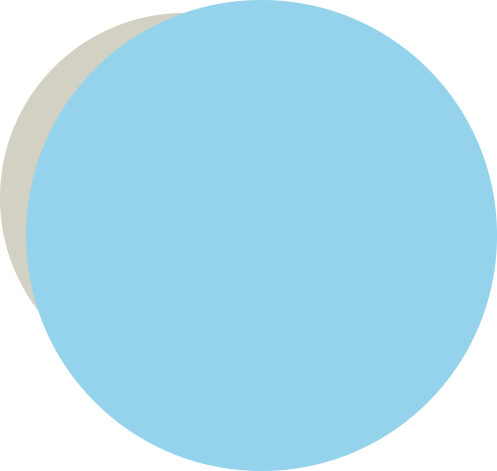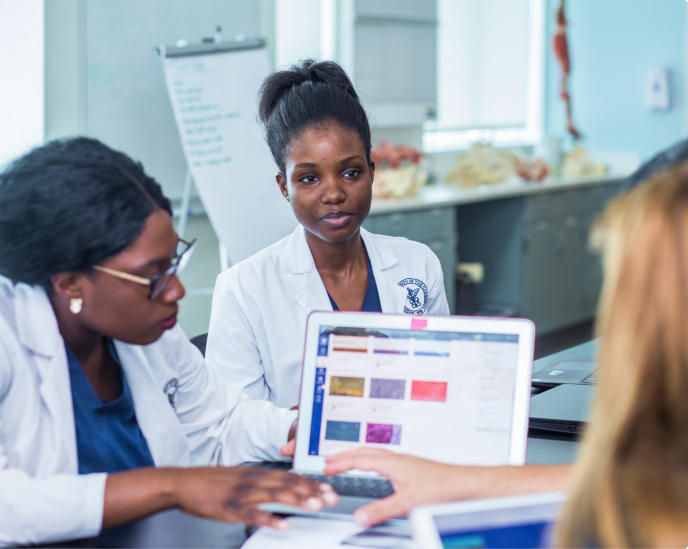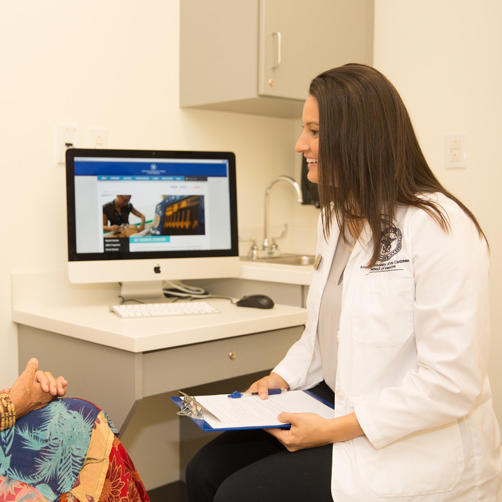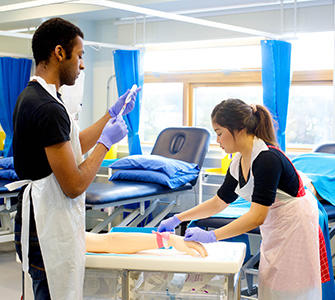Medical specialties can seem awfully narrow. Some physicians specialize in treating a certain part of the body, such as the heart or the lungs. Others specialize in certain types of patients, treating women, children, or the elderly, for example. A few even specialize in treating one particular type of illness, such as cancer.
For a physician devoted to a particular focus, a single-minded specialty can be extremely rewarding. But is there a specialty for doctors who find such narrow specialization stifling? What about those with a broader interest in medicine or a thirst for variety? Such doctors might enjoy a career as a family physician.
WHAT IS A FAMILY PHYSICIAN?
A family physician is a doctor who specializes in family medicine, a specialty that provides generalized medical care to people in every stage of life. Family practice physicians treat men and women, young and old. They may provide care from before birth, through childhood and adulthood, and into old age.
While doctors from various specialties may serve as primary care providers, family medicine is the only specialty specifically geared toward producing them. Family physicians thus tend to be the first doctor people call when something is wrong. The family practice physician can handle a wide range of problems, referring the patient to a specialist when necessary.
Perhaps more than any other doctors, family medicine physicians provide a continuity of care for their patients—that is, they see patients throughout their lives, both in sickness and in health. Family doctors tend to forge lifelong relationships with their patients. They may even find themselves treating several generations of the same family.
Because family physicians enjoy close connections with their patients, they also tend to make great patient advocates. A patient advocate helps a patient to navigate a course of medical treatment. Patient advocates counsel their charges, helping them to make decisions and to communicate their wishes.
WHAT DOES A FAMILY PHYSICIAN DO?
Many family physicians work in single or group practice. Others work in a hospital or clinic setting. Many family practice physicians work in cities or suburban areas. But, family physicians play an outsized role in rural or remote areas, where more specialized care may be scarce.
Family physicians are trained to treat a wide range of health issues. They may be called to diagnose and treat colds and infections. They also treat many common injuries, particularly among children.
Family practice physicians also provide a range of preventive care. Many family doctor visits are so-called well-care visits—regularly scheduled checkups intended to ensure health and identify potential problems. Family physicians may monitor body weight and administer such tests as cholesterol tests and pap tests.
Among children, regular well-care visits can help to make sure that growth and development milestones are being met. Family physicians may even monitor prenatal health and oversee or assist with childbirth. Family physicians also administer vaccines, including childhood vaccines and flu shots.
Most family physicians can treat a wide range of common ailments. But part of being a primary care physician is knowing when to defer to more specialized help. Family practice physicians can refer patients to a range of other specialists and help the patient in navigating specialist care.
EDUCATION REQUIREMENTS FOR FAMILY MEDICINE
The path to becoming a family physician begins with a four-year undergraduate education, generally culminating in a bachelor of sciences degree. Students who know they wish to pursue a career in medicine may choose to major in pre-med. However, a variety of majors may be sufficient, so long as classwork includes the requisite college-level mathematics, biology, chemistry, and physics.
The next step to becoming a family care physician is enrolment in a quality medical school, such as the American University of the Caribbean School of Medicine (AUC). Medical school education includes in-depth studies of anatomy and physiology, along with such subjects as histology (the study of tissues) and pathology (the study of disease).
The aspiring family physician will want to pursue the broadest possible variety of coursework, as the family practice physician is called upon to wear many hats. After completing four years of medical school, the aspiring family physician graduates with a Doctor of Medicine (MD) or Doctor of Osteopathy (DO) degree.
A family physician’s training continues with three years of residency. During residency, the doctor in training practices medicine under the close watch and tutelage of trained physicians. A wide range of rotations—including obstetrics, pediatrics, general surgery, emergency medicine, and hospital care—will prepare the family physician to treat a variety of patients and conditions.
A family medicine residency generally includes rotations in a family medicine continuity clinic. Such rotations give the doctor a chance to experience providing regular care to a diversity of patients.
After three years of residency, the doctor is nearly ready to begin practicing family medicine. The final step is passing a board certification exam, such as that offered by the American Board of Family Medicine.
SUBSPECIALIZATION AND COMBINED SPECIALTIES
Some family physicians will choose to continue their training. They may pursue a fellowship in one of the many subspecialties of family medicine, including:
- Adolescent medicine
- Geriatric medicine
- Hospice and palliative medicine
- Pain medicine
- Sleep medicine
- Sports medicine
Some medical school graduates may opt for a residency in a combined specialty program. Such programs are generally five years long, and they enable the doctor to combine family medicine with another specialty:
- Family medicine- emergency medicine
- Family medicine- internal medicine
- Family medicine- psychiatry
- Family medicine- preventive medicine
- Family medicine- osteopathic neuromusculoskeletal medicine
Combined specialties can be especially useful in rural areas, where access to specialized care may be limited.
YOUR CAREER AS A FAMILY PHYSICIAN
It takes at least 11 years to become a family practice physician. That may seem like a lot of training, but the payoff can be a rewarding career in a high-demand field.
Family medicine is a great specialty for the medical student who enjoys part of every rotation. Perhaps more than any other specialty, family practice offers variety in a doctor’s work and patients.
Family medicine also offers a great opportunity to help people. The specialty tends to attract altruists who like helping others. All medical specialties involve helping patients, but the family care physician has something to offer everyone, young and old, men and women, even babies and children.
Families are the building blocks of communities, so it should come as no surprise that family medicine also tends to attract doctors passionate about serving the community. The family physician is a vital member of any rural community. In urban areas, many family care physicians help in poor or underserved communities.
Compared with other specialties, family practice offers a pretty good work-life balance. Though emergencies can happen at any time, the bulk of the family physician’s work will involve well-care visits and scheduled office appointments. Family physicians mainly provide preventive and outpatient care for their patients. As such, they tend to deal with fewer life-or-death situations than other specialties.
Demand for primary care physicians, which includes family physicians, is good. In fact, the Association of American Medical Colleges (AAMC) predicts a shortfall of up to 55,200 primary care doctors by 2033.
Now that you know how to become a family physician, are you interested in pursuing a high-demand career field making a difference in the lives of families and communities? Apply to the AUC School of Medicine.
Related Resources:




